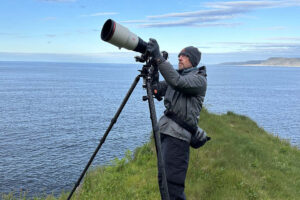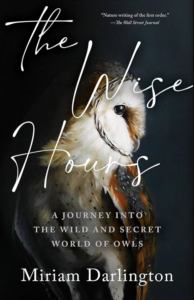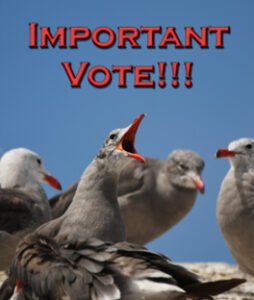Kyle Leader – 1/17/21
Map: Brady Loop; eBird: Brady Loop
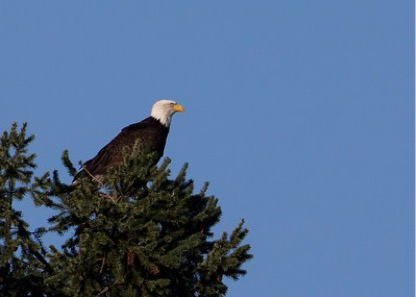
The area known to birders as “Brady Loop” encompasses farm country just south of the small town of Brady and is just east of Montesano. The loop is easily accessed from Hwy 12 (Monte Brady Rd) and is a great stop for birders on their way to and from the coast. The best time to bird the loop is from October- March. However, November is pheasant hunting season so the area is more crowded and generally less productive at that time.
The main habitats on the loop are agricultural fields and wetlands with some scattered deciduous forest. The wetlands and fields attract large numbers of wintering waterfowl as well as a variety of raptors. One of the highlights of Brady Loop is the large numbers of swans that winter in the area. Trumpeter Swans are the most numerous with small numbers of Tundra Swans mixed in.
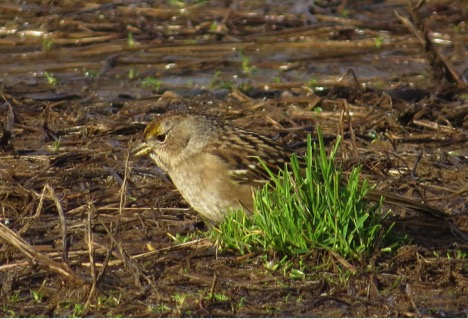
The best way to bird Brady Loop is by car, stopping periodically to scan the fields and wetlands. Pull off the road as far as you can and use your hazard lights when you stop to check something out. When birding the loop I like to start on the west side of Brady Loop Rd and work my way east. Any of the fields can have swans, geese and other water birds. Flooded fields are a good place to check for diving ducks like Bufflehead and Ring-necked Duck. You may also encounter shorebirds like Dunlin, Greater Yellowlegs and Black-bellied Plover. Keep an eye on the power lines for American Kestrel, which are numerous in the area. Large cottonwoods are scattered among the fields and are favorite perches of Bald Eagles and Red-tailed Hawks.
Continue along Brady Loop as it curves east and you will reach the WDFW parking area (Discover Pass required) where a pit toilet is located (bring your own sanitizer). If you feel like stretching your legs, you can explore the fields and woodlands just south of the parking area. Go through the gap in the fence next to the green gate to access this area. The fields are wet and muddy so rubber boots are recommended. This is a good spot to look for sparrows, woodpeckers and chickadees.
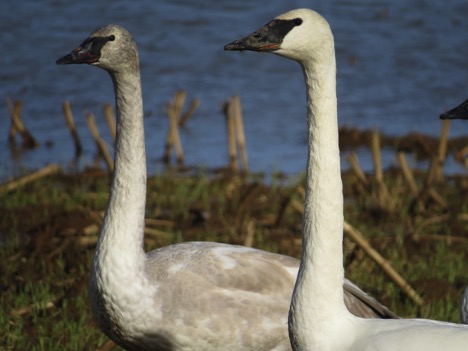
From the parking area continue following Brady Loop Rd until in intersects with Foster Rd. There are more areas to pull off here and the fields are worth checking for waterfowl and blackbird flocks. Foster Rd. offers more chances to look for sparrows and raptors. The fields on the east side of Brady Loop Rd often have the highest concentration of swans. Using your car as a blind will allow you to approach swans close to the road. On my recent visit I used this method to photograph a group of Trumpeter Swans. All in all, I found 727 individual birds in 43 species, in two hours.
As of 1/17/21, the west side of Brady Loop Rd is closed due to high water over the road. The rest of the loop is open, but there are still areas with water on the roadway. As always practice good birding etiquette: respect private property and be aware of other vehicles when birding by car.
This field trip is appropriate for mobility challenged birders since it can be done entirely from inside or just outside of a car.
BEFORE YOU GO:
Before heading off for a birding adventure, here are some things to consider –
1. It’s always best to have a partner with you – both to maximize the joy and to minimize the risks. BHAS cannot ensure that these locations are totally safe.
2. Don’t forget to bring your mask and hand sanitizer. Have your mask handy and put it on when passing another person not in your party.
3. Leave valuables at home.
4. Check the weather and the bird reports before heading out. An easy way to check what birds have been seen is through Birder’s Dashboard http://birdingwashington.info/dashboard/. It is a simple way to research a species, place, or checklist.


